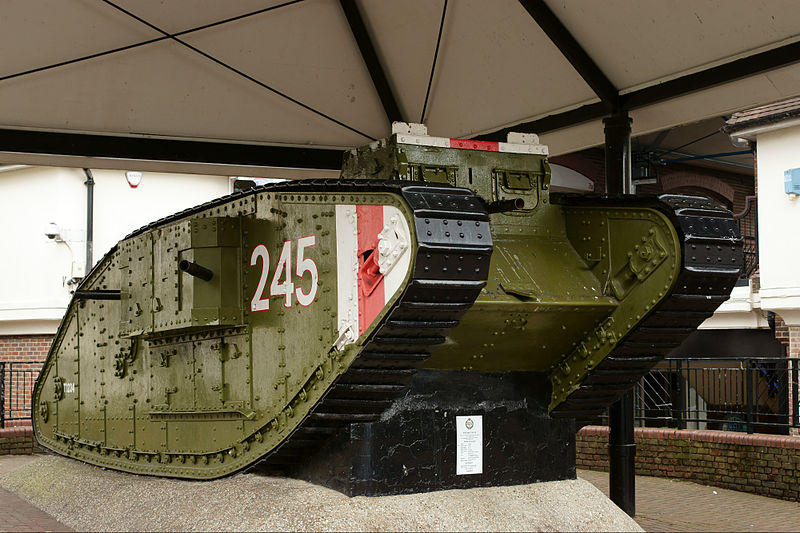Throughout history, there have been some truly iconic tanks. One of these is the Mark IV Tank, which was the most prolific and efficient tank of the First World War.
The Mark IV is still widely discussed to this day and was even inserted into the movie Transformers: The Last Night, when one of the characters (Bulldog) transforms into a Mark IV tank.
This article is going to provide some useful details and information about this sacred tank.
Development
As its name suggests, the Mark IV tank came into fruition after the previous models before it: Mark I, II and III.
Tanks II and II were heavy training tanks, whereas the first Mark tank (Mark I) was a heavy tank. Therefore, the Mark IV was largely influenced and inspired by Mark I, as it too was developed to be a heavy tank – but this time with significant improvements. This is not to say that Mark I was a poor or underperforming tank, quite the opposite – the Mark I actually experienced modest success in the battle fields. However, British Commander-in-Chief Sir Douglas Haig wanted improvements to take place, so ordered that 1000 Mark IV tanks be made in 1917. This is a surprisingly high number to request for a new and unproven tank – but the order was given the green light to go ahead, anyway.
Therefore, production of the Mark IV officially started in May 1917 and ended in 1918. In total. there were 420 ‘males’, 595 ‘females’, and 205 tank tenders (a version for carrying supplies like weapons and ammo) made of the Mark IV.
During production, there were several key focus areas. Mark IV was given excellent armor, a better fuel tank and ease of transportation – meaning it could get around more easily (which is very important when it comes to tanks). For the tank fanatics out there, it would have been great to travel in.
Design
The Mark IV is regarded by many as one of the most well-designed tanks in history. It was the first tank to feature unditching beams, which are reinforced wooden beams across the top of the tank. The reason for this was in case the tank suddenly became stuck in battle (which often happened to tanks in both World War 1 and 2). The beam would be attached to the tracks and then pulled underneath, which would provide grip and enable the tank to be loosened and start moving again.
Taking a look at the tank as a whole, the male versions were 28 tons and the female 27 tons. The armor was 0.47 inches and incredibly protective. Due to its bigger design, the Mark IV could fit a crew size of 8.
Service
The Mark IVs were first used in the Summer of 1917 and were active right until the end of the First World War. The Mark IV had an iconic moment when it was victorious in the first 1v1 between two tanks, which took place in April 1918 and witnessed the Mark IV destroy the German A7V tank Nixe.
Surviving vehicles
Thankfully, there are 6 Mark IV tanks that have survived to the present day, 3 of which can be found in the UK. A female version of The Mark IV is at the Museum of Lincolnshire Life in Lincoln – many surviving tanks are often given to museums to preserve and showcase to the public.
Bibliography
- https://tankmuseum.org/tank_collection/mark-iv/
- https://en.wikipedia.org/wiki/Mark_IV_tank
